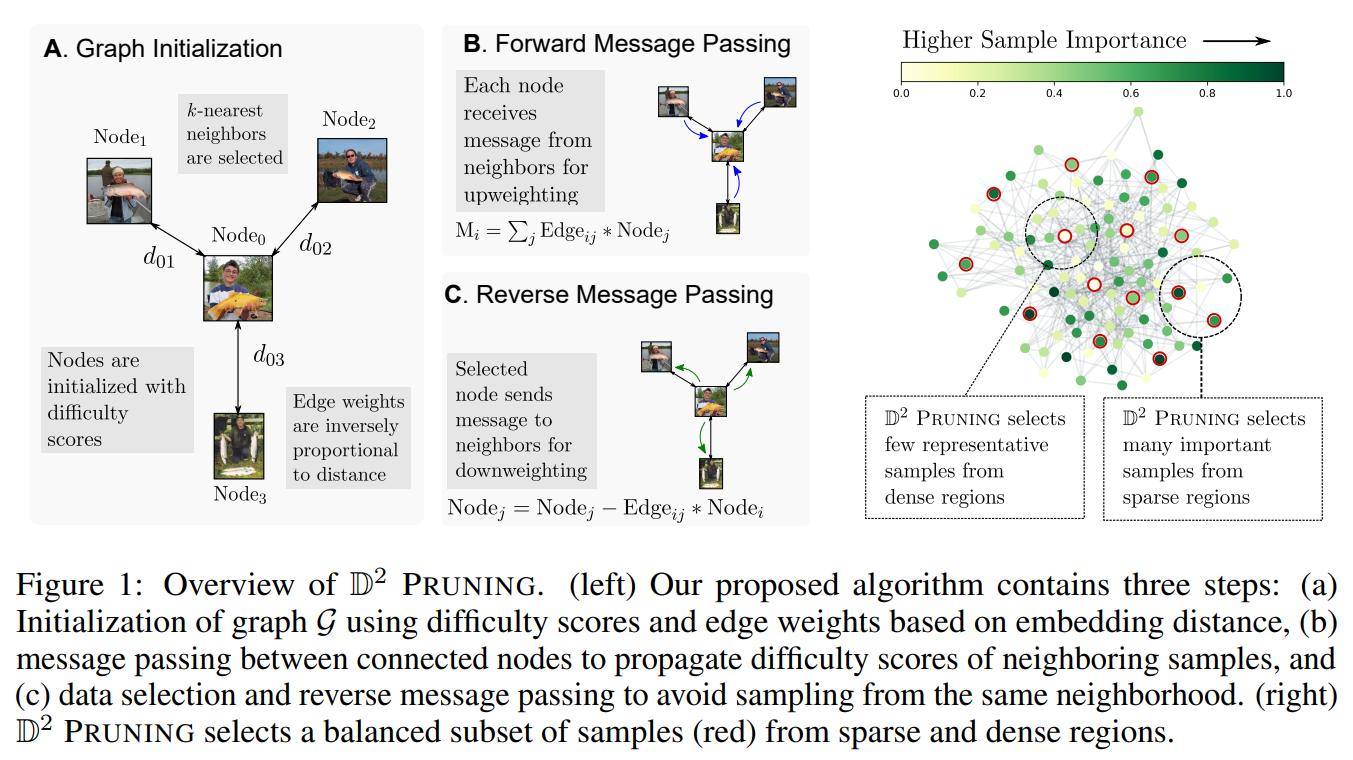D2 Pruning: Message Passing for Balancing Diversity and Difficulty in Data Pruning
Analytical theories suggest that higher-quality data can lead to lower test errors in models trained on a fixed data budget. Moreover, a model can be trained on a lower compute budget without compromising performance if a dataset can be stripped of its redundancies. Coreset selection (or data pruning) seeks to select a subset of the training data so as to maximize the performance of models trained on this subset, also referred to as coreset. There are two dominant approaches: (1) geometry-based data selection for maximizing data diversity in the coreset, and (2) functions that assign difficulty scores to samples based on training dynamics. Optimizing for data diversity leads to a coreset that is biased towards easier samples, whereas, selection by difficulty ranking omits easy samples that are necessary for the training of deep learning models. This demonstrates that data diversity and importance scores are two complementary factors that need to be jointly considered during coreset selection. We represent a dataset as an undirected graph and propose a novel pruning algorithm, D2 Pruning, that uses forward and reverse message passing over this dataset graph for coreset selection. D2 Pruning updates the difficulty scores of each example by incorporating the difficulty of its neighboring examples in the dataset graph. Then, these updated difficulty scores direct a graph-based sampling method to select a coreset that encapsulates both diverse and difficult regions of the dataset space. We evaluate supervised and self-supervised versions of our method on various vision and language datasets. Results show that D2 Pruning improves coreset selection over previous state-of-the-art methods for up to 70% pruning rates. Additionally, we find that using D2 Pruning for filtering large multimodal datasets leads to increased diversity in the dataset and improved generalization of pretrained models.
PDF Abstract

 CIFAR-10
CIFAR-10
 ImageNet
ImageNet
 CIFAR-100
CIFAR-100
 IMDb Movie Reviews
IMDb Movie Reviews
 ANLI
ANLI